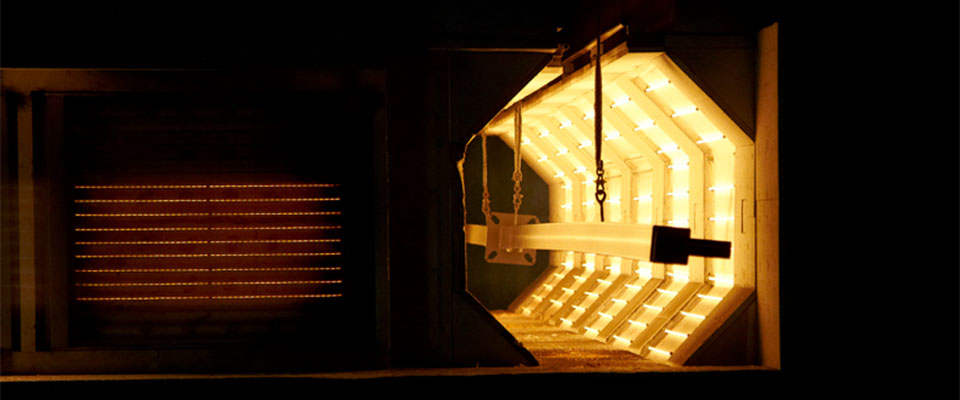
Stage 1: Cleaning and SSPC-SP10
The Society for Protective Coatings’ SP10 regulation requires that all poles be visibly free of oil, grease, dust, dirt, mill scale, rust, coating, and oxides. So before applying the finish, we thoroughly inspect the pole and remove any contaminants and imperfections.
Then the pole is cleaned with our four-wheel shot blaster system, which utilizes small ball-shaped steel pellets to produce a clean, smooth, and polished surface through a peening action created by the acceleration of the shot. When the pole exits the blaster, we use compressed air to remove any remaining unwanted particles. The result is a “near white” finish on the substate of the pole.
This is a critical stage in the process as it determines the overall success of the powder coating.
Stage 2: Phosphate Rinse (Steel Poles Only)
If we’re working with a steel pole, the structure is then sent through a phosphate rinse — which creates an iron oxide base — followed by a flat or amorphous metal phosphate topcoat. This process improves bonding and corrosion resistance and minimizes the spread of oxidation if the finish is scratched.
Stage 3: Powder Coat Application
This is where the magic happens. We use a specially formulated triglycidyl isocyanurate (TGIC) polyester in powder form for electrostatic application – meaning the powder is negatively charged while the pole is electrically grounded, magnetizing the powder to the pole and creating a uniform coat that’s a minimum of 5 mils thick.
Stage 4: Curing
It’s about to get hot. The curing stage is what cements the powder coat to the pole. We cook the pole at temperatures over 450 degrees to melt the powder and establish the full film properties that ensure the best protection for your light poles.
Stage 5: Blue Wrap
After the pole cools, we protect it with our signature Blue Wrap — a UV and tear-resistant bubble wrap intended to ensure your pole reaches the job site in excellent condition.
You’ve Got Your Powder Coated Poles – Now What?
When your poles arrive at the job site, it’s important that the Blue Wrap be removed and that the pole is inspected for any damage. The Blue Wrap should not be left on the pole at the job site for any period of time prior to installation as this can cause damage to the finish. Once your pole is installed, we recommend annual inspections. Take note of any fading, chalking, cracking, or peeling, as those are all signs of coating failure. If you find those blemishes, you can touch up your coating with a special aerosol that we provide upon delivery.
If you do have concerns about the finish on your poles, contact your General Structures, Inc. Service Team and we can address them.
Have questions? Talk poles with Michael. Also helpful: check out our finish warranties.





